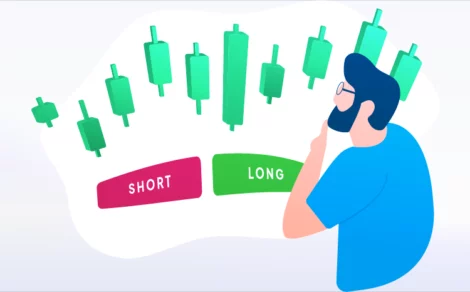Toruscope » Online Trading » The Barbell Strategy: A Dual Approach to Successful Investing
In the world of investing, there’s no one-size-fits-all approach. One strategy that stands out for its unique risk-reward balance is the barbell strategy. But what is barbell strategy really about?
The barbell strategy involves allocating investments into two extremes of maturity – short-term bonds and long-term bonds – while avoiding the middle. The idea is to benefit from the safety and liquidity of short-term investments while still capturing the potentially higher returns of long-term securities.
Imagine holding certificates of deposit or treasury bills on one side and long-duration bonds or high-yield assets on the other. This structure resembles a barbell, hence the name.
The Mechanics Behind the Barbell Approach
The barbell strategy works by balancing risk and returns in a simple yet effective manner. Here’s how:
- Short-term bonds: These typically include low-risk instruments such as treasury bills, commercial paper, or CDs. They offer lower yields but can be quickly reinvested as rates rise, giving flexibility.
- Long-term bonds: These instruments carry higher yields but are more sensitive to interest rate risk. When held to maturity, they offer potentially higher returns than intermediate-term bonds.
By skipping the middle (medium-term bonds), investors can remain agile in changing market conditions. If interest rates go up, short-term investments can be rolled over at higher yields. If rates drop, the long-term bonds already offer a locked-in, higher rate.
The barbell strategy works particularly well in volatile or uncertain interest rate environments.
Real-Life Applications of the Barbell Strategy
Let’s understand with a few practical scenarios:
Example 1: Fixed-Income Portfolio
An investor puts 50% of the portfolio in short-term government securities and 50% in 20-year corporate bonds. The short-term portion is reinvested every 6 months, while the long-term bonds offer steady interest income.
Example 2: Stock Market Barbell
This variation isn’t limited to bonds. A barbell stock strategy could involve investing in extremely safe dividend-paying blue-chip stocks and high-growth, high-risk small-cap stocks — skipping the moderately risky mid-cap space.
Example 3: Retirement Planning
Retirees often use a barbell strategy by holding short-term bonds for liquidity and income, and long-term bonds or annuities for future income. This helps them manage cash flow while preparing for inflation or longer life expectancy.
Each of these examples shows how the strategy balances liquidity, income, and risk in different ways.
Why Investors Choose the Barbell Method?
- Interest Rate Flexibility
Short-term bonds can be reinvested frequently. If interest rates rise, you can quickly adapt and benefit from higher returns. This allows you to stay agile in dynamic rate environments without being locked into low-yield instruments. It’s especially helpful when central banks are expected to change policy directions frequently.
- Income Stability
Long-term bonds offer a reliable stream of income, which can be crucial for retirement or conservative portfolios. These bonds provide predictability, helping you plan long-term financial goals. Even during periods of market turbulence, they offer a sense of stability and assurance.
- Diversified Risk
By avoiding medium-duration bonds, which are more exposed to interest rate risk, investors hedge against unpredictable market shifts. You reduce the concentration of risk in a single time horizon, which helps cushion portfolio shocks. This blend offers the best of both liquidity and long-term potential.
- Simple Execution
Compared to more complex approaches like the bullet strategy, the barbell strategy is straightforward, even for beginners. It doesn’t require complicated forecasting or constant portfolio restructuring. The simplicity makes it suitable for DIY investors as well as professionals.
Limitations of the Barbell Strategy
- Reinvestment Risk
Short-term instruments may offer lower yields, and if interest rates fall, future reinvestments might earn less. This can gradually erode portfolio returns over time if not monitored actively.
Investors may need to keep adjusting their holdings to maintain overall yield.
- High Volatility in Long-Term Bonds
Long duration bonds are sensitive to market changes. A sudden rise in rates can cause their prices to drop sharply. Such volatility may make the portfolio value fluctuate significantly in the short term.
It’s important to hold these to maturity if you’re aiming to avoid capital losses.
- Missed Middle Opportunities
Avoiding medium-term bonds might cause you to miss out on certain opportunities that offer better yield-risk balance. Sometimes, mid-duration instruments are optimally priced for stable returns.
Excluding them completely might narrow your portfolio’s earning potential.
- Requires Active Monitoring
Although simple in concept, the strategy demands regular monitoring, especially on the short-term side, to reinvest at optimal times. If neglected, the short-term portion may sit in low-yield instruments, dragging returns down. You need to stay informed about interest rate movements and liquidity conditions.
Is the Barbell Strategy Right for You?
The barbell strategy is a time-tested technique, especially effective during uncertain or fluctuating interest rate periods. It works best for investors who want to protect a portion of their funds while seeking long-term growth or income.
Whether you’re managing a bond portfolio, planning for retirement, or trying to create a balanced trading strategy, the barbell strategy offers a smart mix of stability and upside.
By blending short-term and long-term investments and avoiding the middle ground, this approach keeps you prepared for both ends of the market spectrum. It may not be perfect, but when used with a clear goal and consistent monitoring, it can be a powerful addition to your financial toolkit.
For more such insightful reads on stock market techniques and strategies, stay connected with Torus Digital!
Related Reads
What is Slippage in Trading? Meaning, Causes & Impact Explained
In trading, timing and precision often define success. However, even when a trader believes...
By: torus
- 7 mins
- 01.Jul.2025
- 4(1)
- 96
What is an Option Contract?
Imagine having the flexibility to buy or sell shares at a fixed price, no...
By: torus
- 7 mins
- 01.Jul.2025
- 0(0)
- 43
Types of Financial Instruments You Should Know Before Investing
Before investing funds in any market, it is essential to understand what financial instruments...
By: torus
- 7 mins
- 01.Jul.2025
- 0(0)
- 39
What are Contracts for Difference (CFD)?
Contracts for Difference, commonly known as CFDs, are financial instruments that allow traders to...
By: torus
- 9 mins
- 01.Jul.2025
- 0(0)
- 39
Difference between Short Position & Long Position
Understanding the concepts of short and long positions is essential for anyone interested in...
By: torus
- 8 mins
- 01.Jul.2025
- 0(0)
- 38
Essential Trading Terminologies You Need to Know
Trading in financial markets opens a world full of opportunities. For many first-time investors,...
By: torus
- 8 mins
- 01.Jul.2025
- 0(0)
- 47
Disclaimer: The content provided in this blog is for informational purposes only and does not constitute financial advice or recommendations. The content may be subject to change and revision. Readers are encouraged to conduct their own research and consult with a qualified financial advisor before making any investment decisions. Torus Digital and its affiliates takes no guarantees whatsoever as to its completeness, correctness or accuracy since these details may be acquired from third party and we will not be responsible for any direct or indirect losses or liabilities incurred from actions taken based on the information provided herein. For more details, please visit www.torusdigital.com.
Tenneco Clean Air IPO Listing: Strong Market Debut with 27% Premium
Tenneco Clean Air India Ltd made a confident entrance into the public markets on...
By: torus
- 5 mins
- 19.Nov.2025
-
3.7(6)
-
360
Stock to Buy Today: November 19, 2025
The Indian stock market witnessed a mild decline on November 18, 2025, ending a...
By: torus
- 4 mins
- 19.Nov.2025
-
4.3(3)
-
360
Mirae Asset Infrastructure Fund NFO: A Sector-Focused Bet on India’s Growth
Mirae Asset Mutual Fund has launched a new equity scheme — Mirae Asset Infrastructure...
By: torus
- 4 mins
- 18.Nov.2025
-
4.3(6)
-
360
Emmvee Photovoltaic IPO: Shares Make Muted Market Debut, List Flat At ₹217
Emmvee Photovoltaic Power made a muted debut on 18 November 2025, listing flat at...
By: torus
- 3 mins
- 18.Nov.2025
-
3.7(6)
-
360








